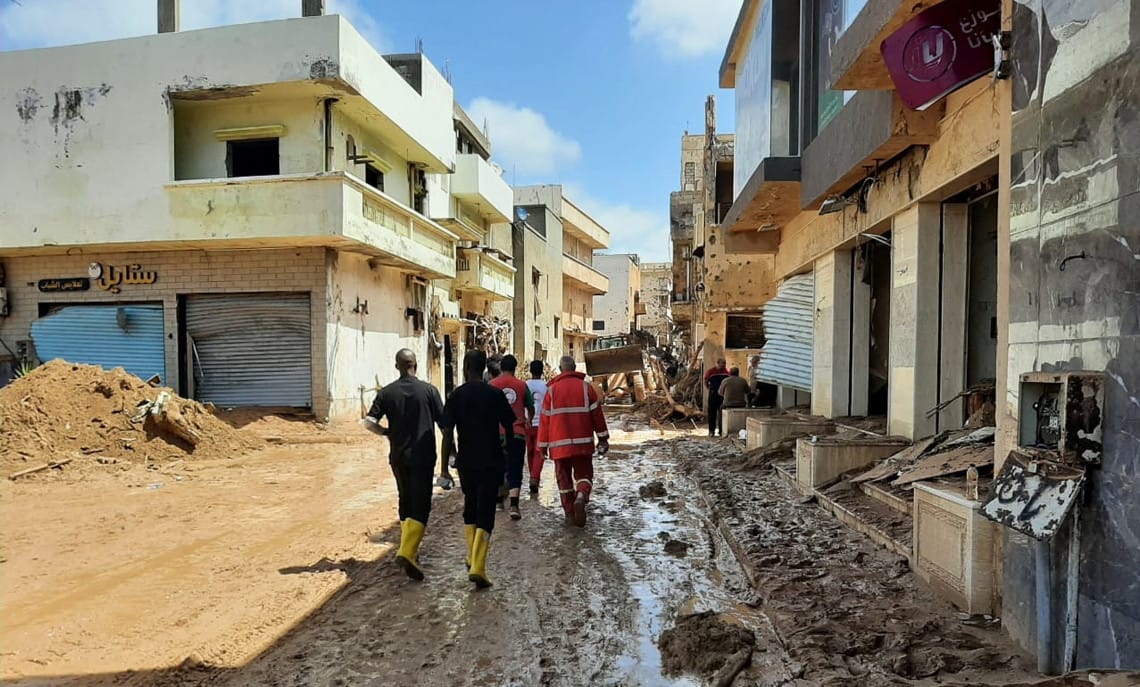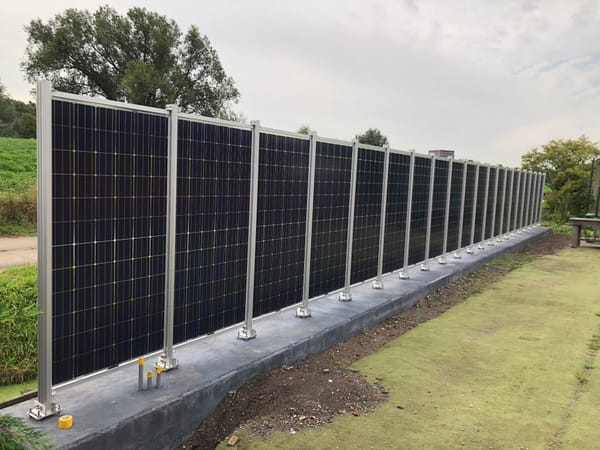The revolutionary possibilities of the Loss and Damage Fund’s bureaucratic details
There’s already some extremely exciting ideas getting kicked around that could be transformative on many levels.

A great deal of digital ink has been spilled hailing the operationalization of the Loss and Damage Fund at COP28. Exactly what the Fund will do, and who gets money under what circumstances still needs to be worked out, but there’s already some extremely exciting ideas getting kicked around that could be transformative on many levels.
Operationalized by COP28 within the first hour of the meeting in Dubai, the Fund is meant to provide redevelopment capital for countries and individuals impacted by climate-fueled disasters. With a financing goal of US$100 billion a year, so far less than US$800 million has been pledged. The paltry amount offered up seems even smaller when measured against research that suggests $590 billion a year could be needed by 2030 and $1 trillion by 2050.
An inaugural 26-member board for the Fund is supposed to meet within the first quarter of 2023 and then, by COP29 in November, determine a host country for the board, appoint an executive director, create criteria for how countries receive funding under what circumstances and how countries are supposed to apply for and demonstrate their need for funding. Developing countries have named their board members while rich countries have delayed naming their members as the countries fight over who gets how many seats.
Meanwhile, between now and COP29, climate negotiators are supposedly discussing how to ensure a steady stream of funding for the fund – preferably one that isn’t dependant on annual grants from national budgets.
It seems unlikely that rich countries will want to be on the hook for an annual payment, as they already are for the $100 billion a year Global Climate Fund. Language added to the Loss and Damage Fund’s creation allowed for financing to come from a “wide variety of sources”. Initially this seemed like a play for Western countries to attract contributions from non-profit funds, but now there is increasing discussion of creating a steady, independent revenue stream, such as a tax on airline tickets or a maritime carbon tax, each of which could easily fund the $100 billion annual target.
Financing the Loss and Damage Fund this way would be nothing less than revolutionary. It would alleviate rich countries of the burden of writing a check every year. More importantly it would provide a new kind of agency to the developing world, as it would give an international body serving developing countries a revenue source independent of the good graces of rich countries.
Next, buried in the likely bureaucratic demands of the new fund would be a set of reporting requirements for countries applying for funds that could create new transparency. Primarily, applicant countries would need to produce data showing the level of damage, a census of people suffering harm, and an economic assessment of the damage. To do so, many countries would have to develop new accounting and tracking systems – and then make that data available to the Loss and Damage Fund.
While this is an exciting possibility for transparency, it could create a disparity of data haves and have-nots, suggests Manjeet Dhakal of Climate Analytics. “Early movers, those who have the capacity, would be the first to take advantage of the Fund, with a risk of leaving the countries with less capacity behind,” he said in a presentation earlier this month.
Finally, fund distribution opens up another possible disruption, as developing countries review India’s digitized system for direct benefit transfer, which has saved the country US$32 billion a year in efficiency and avoided corruption. Cambodia is now standing up its own digital system, PoorID. It’s possible that the Loss and Damage Fund, by propagating technical requirements and know-how, could make direct payments to impacted individuals around the world and help upgrade developing countries digital infrastructure, suggests Ritu Bharadwaj from the International Institute for Environment and Development.
The new board of the Loss and Damage Fund, once it’s constituted, has a long list of issues to address before next November’s COP29 meeting. But the possibility for earthshaking change is stirring and could make for one of the most positive and exciting movements in the world of climate finance.
Like what you're reading? Please forward to a colleague.
Ideas
The G77 held its Third South Summit in Kampala, Uganda last month, a big event since the last one was 2005. The Outcome Document has a great deal of words condemning Israel’s Gaza War but most of the statement focuses on the need for climate financing. It includes a lengthy section on fully funding the U.N.’s Loss and Damage Fund, reorienting the World Bank towards green investment, and implementing the Bridgetown Initiative. There may be interceding wars, but the global drumbeat is climate finance.
Climate Analytics, the Berlin-based think tank, estimates US$12 trillion of investment will be needed to hit the COP28 pledge of tripling renewables by 2030. $100 billion a year will be needed for just Africa. One third of the $12 trillion investment would be needed to upgrade the world’s electricity infrastructure. Lots more valuable stats in this report, which demonstrates how big a job is ahead of us.
It’s not just the right that opposes climate action. Thomas Piketty, the darling economist of the left, published an editorial in Le Monde arguing that French farmers are already “the most unequal of professions” and that moves to favor the environment (like eliminating diesel subsidies) should be shelved while farmer trade protections should be increased. Meanwhile, the EU cut its agriculture emissions targets.
The presidents of COP28, 29, and 30 assembled on stage Wednesday at the World Government Summit in Dubai to announce they would form a “troika” to encourage more ambitious carbon emissions cutting pledges. While this is a positive development, my first concern was: Does somebody think the diplomacy team in Baku is not very well organized?
A raft of stories appeared this week promoting various geoengineering schemes. Climate activists have generally resisted these ideas, but since it seems more and more likely that we’ll blast through 1.5°C, maybe they need more serious consideration?
Reporting of Note
Feb. 14
Indonesia’s Vote: Three Takeaways for Climate Change [New York Times]
Australia-Tuvalu deal on climate and security may be at risk, intelligence boss says [Guardian]
Feb. 13
Climate-driven migration overtakes Russian aggression as biggest security concern, report finds [Euronews]
Australia Fossil Fuels Should Face New Climate Levy, Experts Say [Bloomberg]
China is building more coal plants but might burn less coal [Sustainability by numbers]
Feb. 11
China’s Carbon Emissions Are Set to Decline Years Earlier Than Expected [Wall Street Journal]





